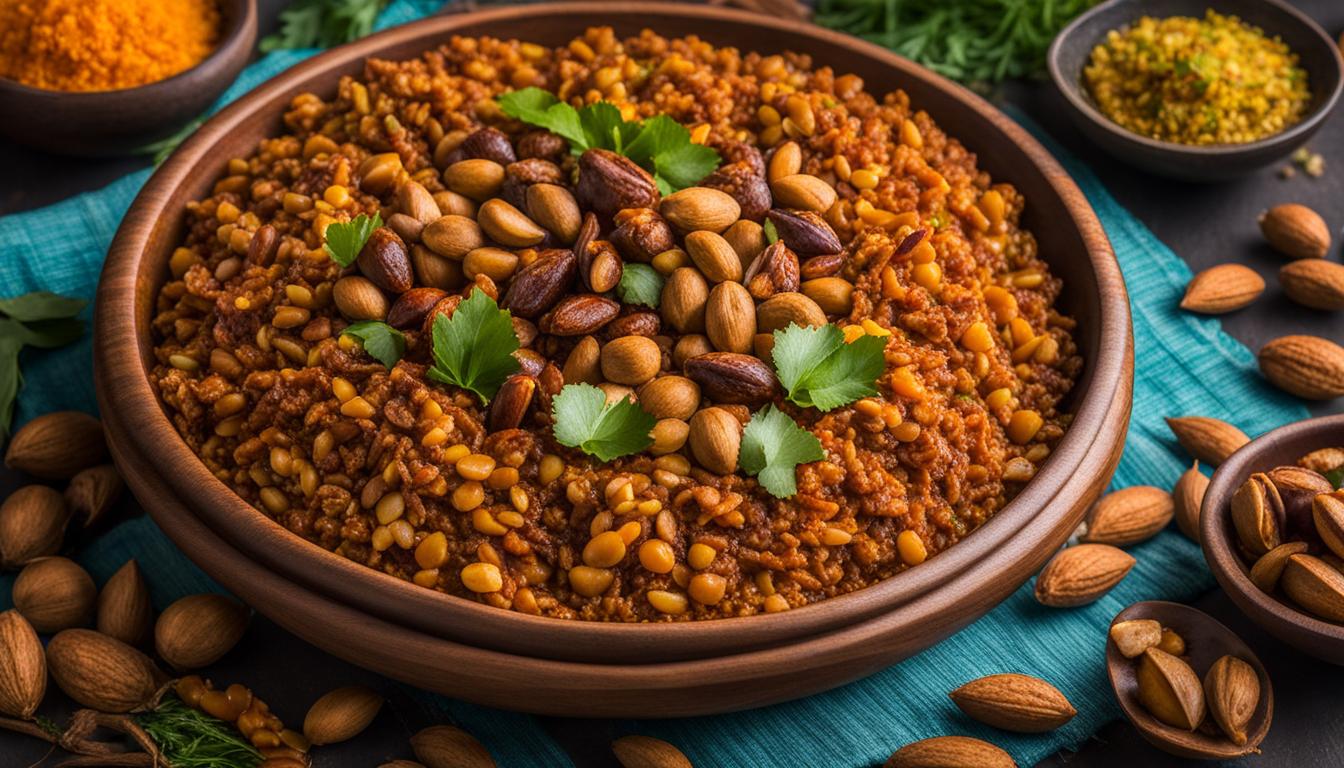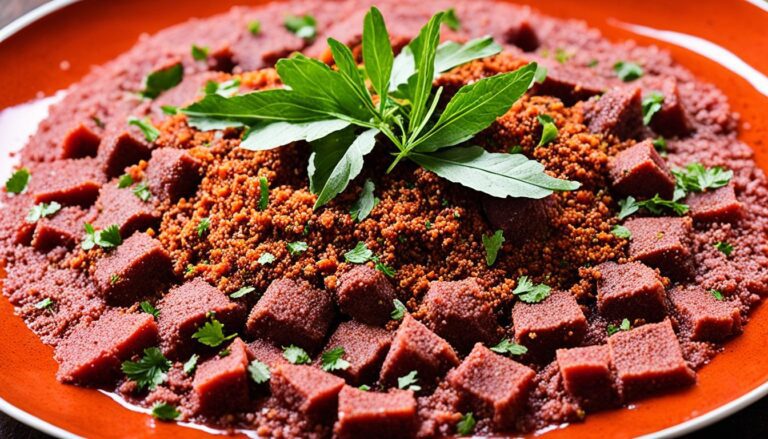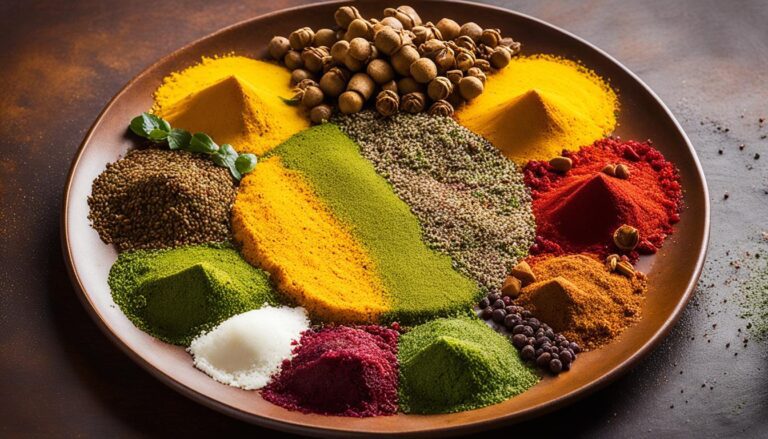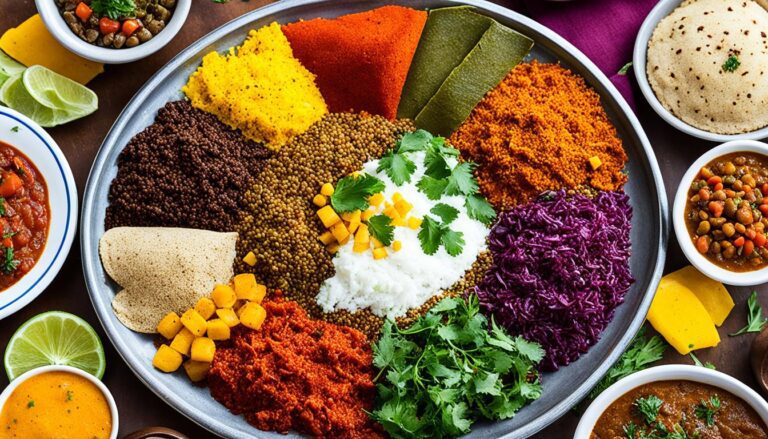Are There Nuts in Ethiopian Food
Welcome to our culinary exploration of Ethiopian food! Have you ever wondered if nuts are incorporated into Ethiopian cuisine? Are you curious to know how to enjoy Ethiopian dishes if you have nut allergies? Join us as we uncover the secrets of Ethiopian culinary traditions and discover whether nuts play a role in these delightful dishes.
Key Takeaways:
- Ethiopian cuisine is renowned for its rich flavors and unique blend of spices.
- Understanding the common ingredients in Ethiopian food is essential to identifying if nuts are used.
- There are a variety of nut-free Ethiopian dishes that you can enjoy without concerns about allergies or dietary restrictions.
- Some traditional Ethiopian dishes do incorporate different types of nuts, adding unique flavors and textures.
- For individuals with nut allergies, we will provide tips on navigating Ethiopian restaurants safely.
The Diversity of Ethiopian Food
Before we delve into the presence of nuts in Ethiopian food, let’s first understand the diversity of this vibrant cuisine. Ethiopian culinary traditions are a melting pot of rich flavors and unique blend of spices, making it a favorite among food enthusiasts worldwide.
One of the most iconic elements of Ethiopian cuisine is injera, a traditional sourdough flatbread that serves as the foundation for many dishes. Made from fermented teff flour, injera is slightly tangy and has a spongy texture, perfect for soaking up the flavors of the various stews and sauces.
Another hallmark of Ethiopian food is the assortment of wats, which are fiery stews made with different meats, vegetables, and legumes. These wats are slow-cooked with a medley of spices, resulting in complex and deeply flavored dishes that are truly satisfying.
When it comes to vegetarian options, Ethiopian cuisine shines with dishes like shiro, a thick and flavorful stew made from ground chickpeas or lentils. Yetsom Beyaynetu is another popular vegetarian platter that features an array of vibrant vegetable dishes. These vegetarian dishes are a testament to Ethiopia’s long-standing tradition of plant-based eating.
Now that we have explored the variety of Ethiopian cuisine, let’s move on to discovering whether nuts are an integral part of these delectable dishes.
Common Ingredients in Ethiopian Food
To identify whether nuts are used in Ethiopian dishes, it’s essential to have an understanding of the common ingredients found in Ethiopian food. This section will provide an overview of the staple components that make up the vibrant flavors of Ethiopian cuisine.
Ethiopian cuisine showcases a rich blend of herbs, spices, and aromatic ingredients that contribute to its unique taste profile. Let’s take a closer look at some of the common ingredients you can expect to find in Ethiopian dishes:
1. Berbere
One of the essential spice blends in Ethiopian cooking is Berbere. It is a fiery, flavorful mixture made with chili peppers, garlic, ginger, and various spices. Berbere adds a distinct heat and complexity to many Ethiopian dishes.
2. Injera
Injera, a spongy sourdough flatbread, is a staple in Ethiopian cuisine. Made from fermented teff flour, Injera serves as both a utensil and a base for various dishes. It has a slightly tangy flavor that complements the bold flavors of Ethiopian stews and curries.
3. Niter Kibbeh
Niter Kibbeh is a spiced clarified butter widely used in Ethiopian cooking. It is made by simmering butter with spices like cardamom, cinnamon, cloves, turmeric, and fenugreek. Niter Kibbeh adds richness and aromatic depth to many traditional Ethiopian dishes.
4. Lentils and Legumes
Lentils and legumes are integral to Ethiopian cuisine, particularly in vegetarian dishes. Split peas, chickpeas, and lentils are cooked into flavorful stews called “Wats” that are rich in spices and often include onions, garlic, and ginger for added depth.
5. Mitmita
Mitmita is another popular Ethiopian spice blend known for its fiery nature. It typically consists of chili peppers, cardamom, cloves, and other aromatic spices. Mitmita adds a kick of heat and an intense flavor to many Ethiopian dishes.
These are just a few examples of the common ingredients that contribute to the vibrant and diverse flavors of Ethiopian cuisine. With their aromatic spices, bold flavors, and unique cooking techniques, Ethiopian dishes are a true culinary delight.
Nut-Free Ethiopian Dishes
Now, let’s explore the rich variety of Ethiopian dishes that are crafted without the inclusion of nuts. Whether you have allergies or dietary restrictions, these nut-free options offer a delightful array of flavors and textures that you can savor without any concerns.
One popular dish that is free from nuts is Tibs. This hearty and aromatic stew is traditionally made with tender pieces of meat or vegetables cooked in a blend of spices. With its robust flavors and comforting warmth, Tibs is a delicious choice for those seeking nut-free Ethiopian cuisine.
Kitfo is another renowned Ethiopian dish that is completely nut-free. It features minced meat, typically beef, seasoned with various herbs and spices. Kitfo is often served with injera, the traditional sourdough flatbread, providing a perfect balance of flavors and textures.
Image
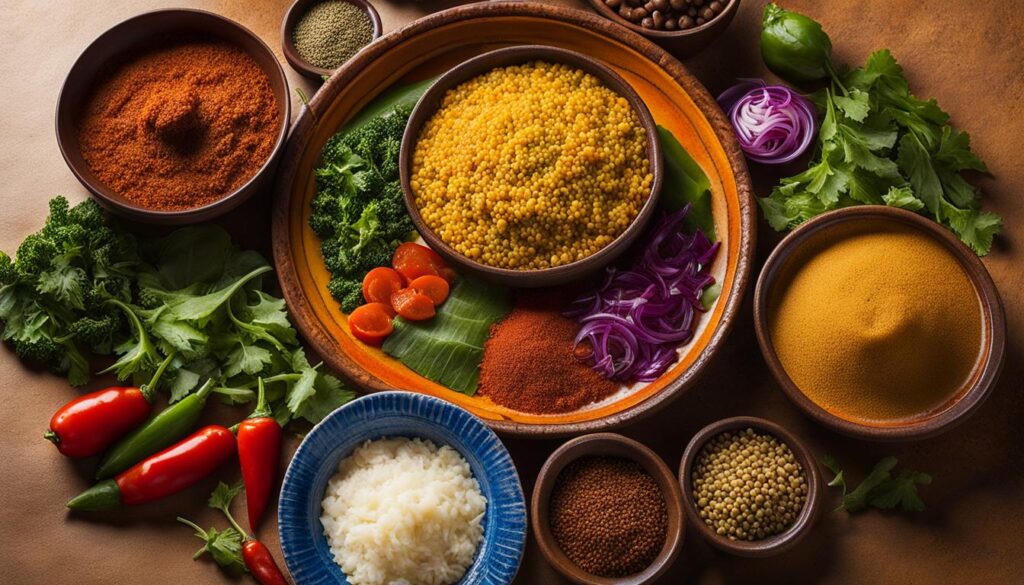
Another delectable nut-free option is Shiro, a hearty and flavorful stew made from ground chickpeas or lentils. This vegetarian-friendly dish is often accompanied by injera and offers a unique and satisfying dining experience.
If you’re craving a lighter option, try the refreshing Yetimatim Selata. This vibrant salad combines a medley of fresh vegetables and herbs, dressed with a tangy vinaigrette. It is a delightful addition to any Ethiopian meal and an excellent choice for those looking for a nut-free dish.
For an authentic Ethiopian breakfast that is free from nuts, consider Ful Medames. This traditional dish is made from simmered fava beans, seasoned with herbs and spices. Served with bread or injera, Ful Medames provides a healthy and satisfying start to the day.
These are just a few examples of the diverse range of nut-free Ethiopian dishes that await you. Whether you’re exploring the flavors of Ethiopian cuisine for the first time or seeking new options to enjoy, these delightful creations showcase the richness and versatility of Ethiopian cooking without the presence of nuts.
Ethiopian Dishes with Nuts
When it comes to Ethiopian cuisine, nuts play a significant role in enhancing the flavors and textures of various dishes. They add a delightful crunch and subtle nuttiness that elevates the overall dining experience. In this section, we will explore some of the most popular Ethiopian dishes containing nuts, allowing you to immerse yourself in the rich culinary traditions of Ethiopia.
One iconic Ethiopian dish that incorporates nuts is the Doro Wat. This savory chicken stew showcases the complex flavors of berbere spice and is traditionally cooked with ground peanuts, which lend a creamy and nutty undertone to the dish. Served with injera, the fermented sourdough bread, Doro Wat is a must-try for those who appreciate the fusion of nutty and spicy flavors in Ethiopian cuisine.
Another beloved Ethiopian dish that features nuts is the Yetsom Beyaynetu, a flavorful vegetarian platter. While the exact ingredients may vary, this assortment of lentils, greens, and vegetables often includes dishes seasoned with nuts. For instance, the spinach dish known as Gomen is frequently prepared with almonds or peanuts, adding a delightful crunch and hint of nuttiness to the vibrant flavors.
Image:
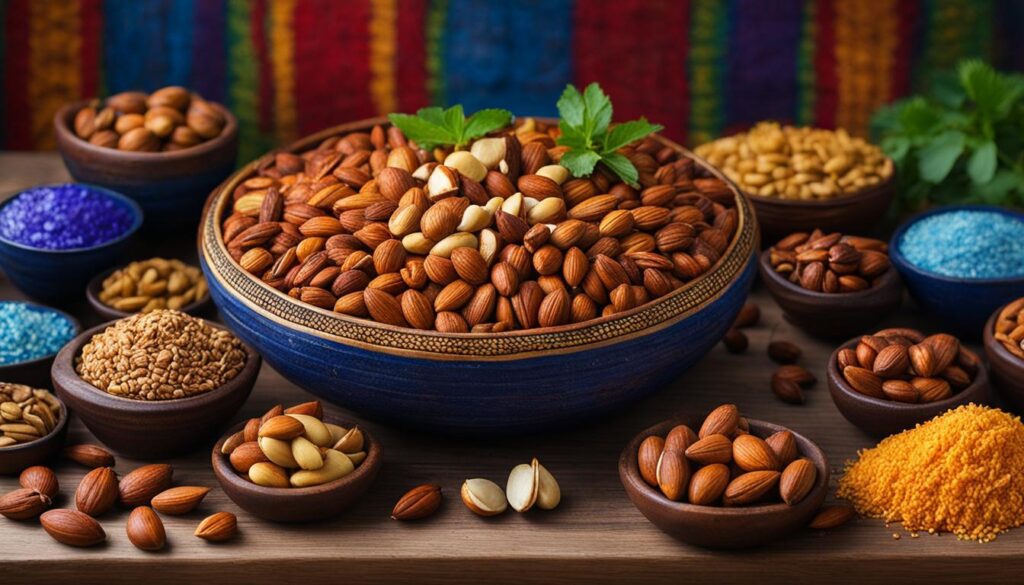
Indulging in Ethiopian dishes with nuts offers a unique culinary experience that combines the richness of spices with the natural goodness of various nuts. Whether you prefer the depth of flavors in Doro Wat or the wholesome vegetarian options in Yetsom Beyaynetu, you’re in for a treat that showcases the skill and creativity of Ethiopian chefs.
Nut Allergies and Ethiopian Food
For individuals with nut allergies, managing their condition while dining out can be a challenge. When it comes to exploring the vibrant flavors of Ethiopian cuisine, it’s important to take precautions and communicate your dietary needs effectively to ensure an allergy-safe dining experience.
While Ethiopian cuisine is known for its diverse and flavorful dishes, it is crucial to be aware of potential cross-contamination risks. Many Ethiopian recipes include a variety of ingredients, and nuts may be present in some dishes or as garnishes.
Tips for Managing Nut Allergies in Ethiopian Cuisine
To safely enjoy allergy-safe Ethiopian dining, here are some valuable tips:
- Research beforehand: Before visiting an Ethiopian restaurant, check their menu online or call ahead to inquire about nut-free options and their awareness of cross-contamination risks.
- Communicate your allergies: When making a reservation or upon arriving at the restaurant, inform the staff about your nut allergy. Clearly and politely communicate the severity of your allergy so that they can take necessary precautions in the kitchen.
- Ask about ingredients: If you’re unsure about the presence of nuts in a particular dish, don’t hesitate to ask the servers or the chef. They can provide guidance about potentially allergy-safe choices.
- Explore nut-free options: Ethiopian cuisine offers a wide variety of delicious dishes that do not contain nuts. Look for options like misir wat (spicy lentil stew), gomen (collard greens), or kitfo (spiced ground beef).
- Avoid shared utensils or dips: To minimize the risk of cross-contamination, ask for separate utensils or sauces that haven’t been in contact with nuts. Ethiopian cuisine often involves communal eating, so it’s crucial to take extra precautions.
- Catering and private events: If you’re organizing a catered event or private party with Ethiopian cuisine, clearly communicate your allergen concerns to the catering service. They can work with you to create a menu that is safe and enjoyable for everyone.
By being proactive, communicating effectively, and making informed choices, managing nut allergies while dining in Ethiopian restaurants can be a safe and enjoyable experience. Remember to prioritize your health and always be vigilant about potential cross-contamination risks.
Conclusion
As we conclude our exploration of Ethiopian food and its relationship with nuts, we hope you now have a better understanding of the ingredients commonly found in Ethiopian dishes. Ethiopian cuisine offers a world of flavors to savor, whether you’re eager to try nut-free options or carefully select dishes that include nuts.
For those with nut allergies, it’s important to prioritize your health and communicate any allergies or dietary restrictions to ensure a safe and enjoyable dining experience. Ethiopian restaurants can accommodate your needs by providing nut-free options and making necessary accommodations to prevent cross-contamination.
So, whether you’re dining out or trying your hand at cooking Ethiopian dishes at home, remember to indulge in the rich flavors and vibrant spices of Ethiopian cuisine while staying mindful of your dietary requirements. With its diverse culinary traditions, Ethiopian food offers something for everyone to enjoy, regardless of their nut allergies or preferences.

